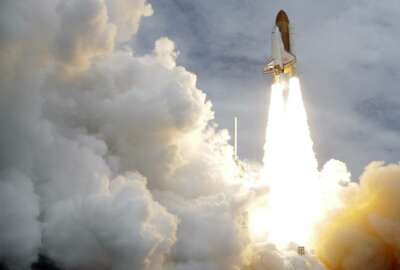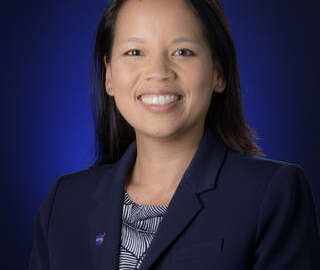
Meet the man who transformed NASA
The 2003 crash of the Space Shuttle Columbia sparked big changes at NASA. That's when its Engineering and Safety Center got established, in order to provide safety...
The 2003 crash of the Space Shuttle Columbia sparked big changes at NASA. That’s when its Engineering and Safety Center got established, in order to provide safety oversight and a culture more attuned to safety. Federal Drive Host Tom Temin‘s guest was the lead guy for the Engineering and Safety Center, and he’s a finalist in this year’s Service to America Medals program, the Sammies. He’s Ralph Roe, Jr., NASA’s former Chief Engineer.
Interview Transcript:
Tom Temin And congratulations on your recent retirement after a long career, mostly with NASA. All with NASA.
Ralph Roe Jr. All with NASA. Yes. Thank you.
Tom Temin All right. So tell us what happened in terms of the agency’s reaction to Columbia, because this was just, you know, a shocking and heartrending worldwide news event.
Ralph Roe Jr. Admiral Gehman was the chairman of the Columbia Accident Investigation Board. And before the investigation was complete, Admiral Gehman made a statement in the press about the space shuttle program Safety and Mission Assurance Organization. He said there’s no there there. And what he was referring to, he felt like that organization didn’t have the resources, the skills, expertise to provide the shuttle program with a second perspective on a problem as challenging as foam loss off the external tank, which caused the accident. And so I was given the action by the administrator, Sean O’Keefe, at the time to address this issue. And so the concept we came up with was to have an organized, an independent organization with experts from across the country that could come in at any time and help a program with its most difficult problems. So that’s what we set out to do when we established the NASA Engineering and Safety Center following the Columbia accident.
Tom Temin And these pieces of tile fell off on the ascent. And in some ways the voyage was doomed even as it proceeded to go into orbit and do its thing. But it was not going to make it through. And there were probably people that knew that throughout the entire length of the mission, that itself as an unimaginable thing to carry. But what should the agency have done differently before the tiles fell off, I guess is really the question. One of the questions you had to answer.
Ralph Roe Jr. It was a foam that came off the external.
Tom Temin Foam, right? Yeah.
Ralph Roe Jr. And it the space shuttle orbiter left hand wing, which the leading edge of that wing is reinforced carbon carbon, but it’s fairly thin. And it cracked one of those reinforced carbon carbon panels. And everyone knew at the time that had this foam came off, we film ascent and we have a team that looks at all those films and alerted everybody that that happened. I think the thing that in hindsight going back, what should have been done is to get a some type of photograph assessment of that wing before the Columbia reentered.
Tom Temin Could that have prevented what happened from happening?
Ralph Roe Jr. It couldn’t have prevented it from happening, but it could have had us attempt some kind of repair, rescue, anything that we could have done at the time if we’d known how severe the damage was.
Tom Temin Sure. And in the larger picture, then this engineering and safety group that you established, what did it do differently in the large sense than was being done at NASA at that time?
Ralph Roe Jr. So I think what the NASA Engineering and Safety Center provides is a group of experts that can come in and look at a problem like that and say, hey, no, you need to do this or that differently and just provide the leaders different perspective on a problem in order to make a better decision going forward. And that’s really the key to that organization.
Tom Temin It sounds like your challenge was not so much engineering, but human relations and getting people to accept a new approach.
Ralph Roe Jr. Oh, absolutely. The Columbia Accident Investigation Board thought at the time the shuttle program was too insular and tried to solve its problems with the resources it had at hand, rather than bringing in folks from the outside to take a look at what they’re doing. And so what I’m proud to say is after nearly 20 years, the NASA Engineering and Safety Center has really become ingrained in the NASA safety culture. And all the programs utilize these experts to look at their most challenging problems. So that’s really rewarding after 20 years.
Tom Temin So the idea then, the basic idea is there is third party or objective assessment of everything going on, and people learn to accept that judgment and say, Yeah, you know, you’re right and we should do this differently and that’ll increase safety.
Ralph Roe Jr. That’s exactly it. And they’ve done over 1000 assessments now over 20 years and had a tremendous impact on all of NASA’s missions.
Tom Temin We’re speaking with Ralph Roe Jr. He recently retired as NASA’s chief engineer and he’s a finalist in this year’s Service to America Medals Program. And I can’t help but asking, how do you think things might have been different in the way the whole Columbia program went? Had your organization been in place prior to it?
Ralph Roe Jr. Great question, Tom. The real opportunity to break the chain of events that led to Columbia was really a couple of flights earlier. We had a very similar foam loss from the external tank that hit the left hand solid rocket booster instead of hitting the orbiter and put a four inch ding in this thick metallic ring. That should have been the perfect close call for the folks in the program, myself included, to say, hey, we need to investigate this further. Unfortunately, though, at the next flight readiness review where we reviewed this problem, we decided it wasn’t a safety or flight concern and we could continue to fly. But if there had been an independent organization like the NASA Engineering and Safety Center that we could have brought in and looked at this problem with a fresh set of eyes and the right technical expertise. I think given how this model has worked since then, that they could have convinced us with data that we need to investigate this further. And that was really the opportunity, I think, to stop what happened in Columbia and bringing in an organization with a fresh set of eyes to look at your problem is not unique to the aerospace industry and I think can benefit everybody. If you just take the time when you have a tough technical problem to bring folks in to look at it and give you a different perspective.
Tom Temin Someone else might have said, Well, yes, that piece didn’t penetrate over there, but if that piece was 10% bigger, which it could be, then, then you’d have a hole all the way to the skin and then the games up. That kind of thing is what someone might have said.
Ralph Roe Jr. Exactly right. You know, a few seconds later, a few seconds earlier, the release of that foam and it hits in a different location and has different impact. So. Absolutely right.
Tom Temin And you sound like a soft spoken gentleman maybe with the some southern roots there I’m detecting through your speech. Did you ever, you know, early on have to yell and scream and holler and stamp your feet at people or I mean, how did you that you don’t sound like a guy that goes around with a baseball bat.
Ralph Roe Jr. Actually, it was very difficult to get programs to utilize this organization at the beginning. In fact, the very first assessments we did, the administrator had to tell the programs that we were going to utilize this organization so they were directed to utilize us. What’s changed over 20 years is now program managers, you know, look for us to come help. And that’s really a huge achievement in, and seeing that evidence that the culture actually changed.
Tom Temin Any examples that you recall in your mind of a specific type of engineering challenge where people came to agreement, yeah, we need to do this differently or do this this way instead of that way.
Ralph Roe Jr. One of the first ones that I remember, again, with the space shuttle program, which was our focus, obviously right after the accident, we had the foam loss off the external tank was the original cause for the Columbia accident, but there were more areas of foam and ice on the tank that could do the exact same thing. And so some of those areas needed to be repaired and design changed in order to eliminate that risk. And so the ice frost ramps on the external tank often would liberate ice, which would impact the space shuttle orbiter also. So the NASA engineering and safety center helped work on a redesign of that area. So we also changed the design of the ice frost ramps, which was very good too.
Tom Temin Which points up two kinds of engineering approaches to a problem. One is to sort of patch it to get through the next time around. The other is to design it out in the first place.
Ralph Roe Jr. Right. You really want to do everything you can to design those kind of risks out, and not have to operationally control risk. So if you can, obviously the best thing to do is design out a risk.
Tom Temin And so now that you’ve retired, you’ve left NASA. I see lots of trophies and plaques and citations in the background here. We’re on a Zoom call, which listeners won’t be able to see, unfortunately. What are you doing? And you’re still in touch?
Ralph Roe Jr. I’m still in touch with everybody. It’s only been six months or so, so I talk to the folks quite often. But actually, really, my wife and I both just retired. And so we’re doing some traveling that we haven’t done in a long time.
Tom Temin Yeah. So you’re thinking about the aircraft you’re on and the design and the safety culture of the airline and so forth. Are you one of those kind of fliers that thinks about all that, or are you pretty much enjoy the flight?
Ralph Roe Jr. No, I enjoy the flight. I enjoy flying any time I get an opportunity.
Copyright © 2025 Federal News Network. All rights reserved. This website is not intended for users located within the European Economic Area.
Tom Temin is host of the Federal Drive and has been providing insight on federal technology and management issues for more than 30 years.
Follow @tteminWFED





